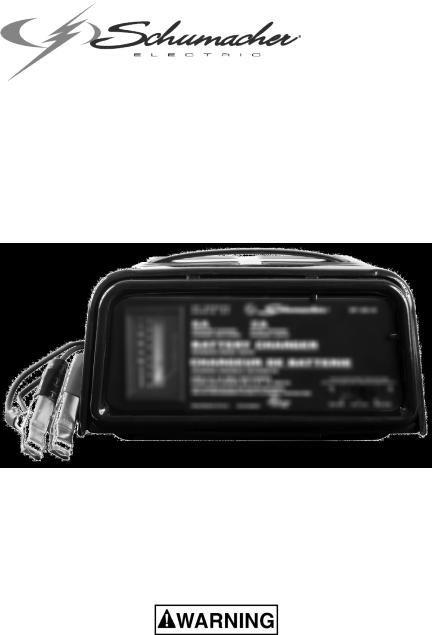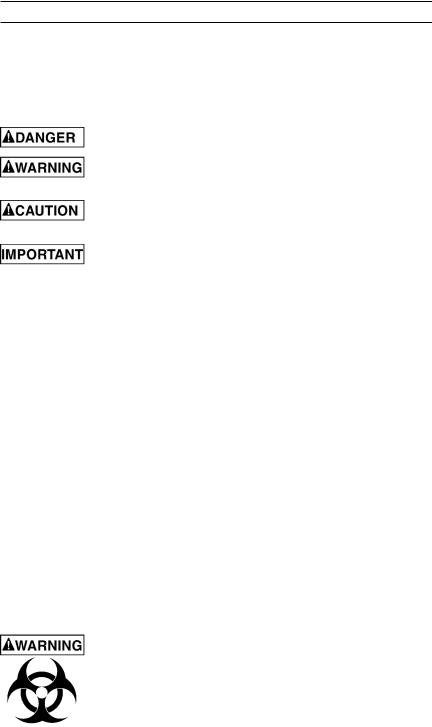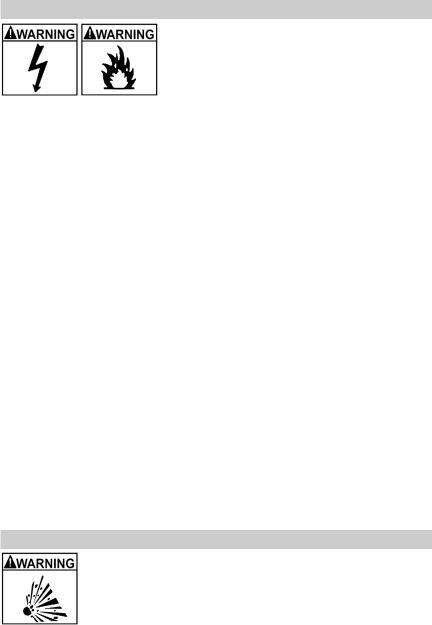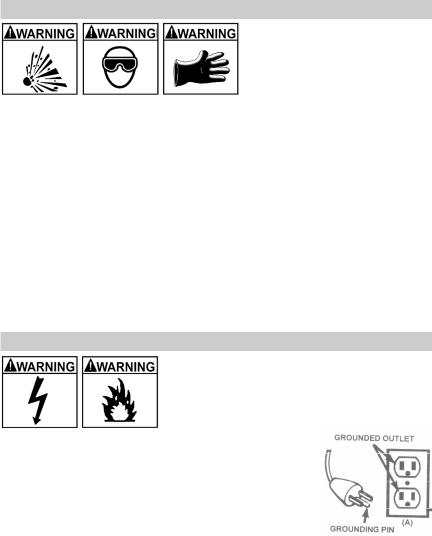Schumacher SE-1052, SE-5212MA, SE-1510MA User Manual

Models / Modelos: SE-40MAP, SE-70MA, SE-82-6, SE-125A, SE-520MA, SE-1010-2, SE-1052, SE-1250, SE-1275A, SE-1510MA, SE-2151MA, SE-5212A, Battery Chargers / Cargadores de Batería
•OWNER’S MANUAL
•Manual del usuario
•READ THE ENTIRE MANUAL BEFORE USING THIS PRODUCT. FAILURE TO DO SO CAN RESULT IN SERIOUS INJURY OR DEATH.
•LEA EL MANUAL COMPLETO ANTES DE UTILIZAR ESTE PRODUCTO. CUALQUIER FALLA PODRÍA RESULTAR EN SERIAS LESIONES O PODRÍA SER MORTAL.
00-99-000931/1009

Table of Contents
Section |
Page |
IMPORTANT SAFETY INSTRUCTIONS |
2 |
PERSONAL PRECAUTIONS |
2 |
PREPARING TO CHARGE |
3 |
CHARGER LOCATION |
4 |
DC CONNECTION PRECAUTIONS |
4 |
FOLLOW THESE STEPS WHEN BATTERY IS INSTALLED IN VEHICLE. |
4 |
FOLLOW THESE STEPS WHEN BATTERY IS OUTSIDE VEHICLE. |
5 |
BATTERY CHARGING – AC CONNECTIONS |
5 |
ASSEMBLY INSTRUCTIONS |
6 |
CONTROL PANEL |
6 |
OPERATING INSTRUCTIONS |
8 |
CALCULATING CHARGE TIME |
10 |
MAINTENANCE INSTRUCTIONS |
10 |
STORAGE INSTRUCTIONS |
10 |
TROUBLESHOOTING |
11 |
BEFORE RETURNING FOR REPAIRS |
13 |
LIMITED WARRANTY |
14 |

ÍNDICE
SECCIÓN |
PÀGINA |
INSTRUCCIONES IMPORTANTES DE SEGURIDAD |
16 |
PRECAUCIONES PERSONALES |
17 |
PREPARACIÓN PARA LA CARGA |
17 |
UBICACIÓN DEL CARGADOR |
18 |
PRECAUCIONES DE CONEXIÓN EN CC |
18 |
SIGA ESTOS PASOS CUANDO LA BATERÍA ESTÉ COLOCADA |
|
EN EL VEHÍCULO. |
19 |
SIGA ESTOS PASOS CUANDO LA BATERÍA SE ENCUENTRE |
|
FUERA DEL VEHÍCULO. |
19 |
CARGA DE BATERÍA, CONEXIONES DE CA |
20 |
INSTRUCCIONES DE MONTAJE |
21 |
PANEL DE CONTROL |
21 |
INSTRUCCIONES DE OPERACIÓN |
24 |
CÁLCULO DE TIEMPO DE CARGA |
25 |
INSTRUCCIONES DE MANTENIMIENTO |
26 |
INSTRUCCIONES DE ALMACENAJE |
26 |
LOCALIZACIÓN Y SOLUCIÓN DE PROBLEMAS |
27 |
ANTES DE DEVOLVER A REPARACIONES |
29 |
GARANTÍA LIMITADA |
30 |

IMPORTANT: READ AND SAVE THIS SAFETY AND INSTRUCTION MANUAL.
SAVE THESE INSTRUCTIONS – The SE series chargers offer a wide range of features to accommodate your needs. This manual will show you how to use your charger safely and effectively. Please read, understand and follow these instructions and precautions carefully, as this manual contains important safety and operating instructions. The safety messages used throughout this manual contain a signal word, a message and an icon.
The signal word indicates the level of the hazard in a situation.
Indicates an imminently hazardous situation which, if not avoided, will result in death or serious injury to the operator or bystanders.
Indicates a potentially hazardous situation which, if not avoided, could result in death or serious injury to the operator or bystanders.
Indicates a potentially hazardous situation which, if not avoided, could result in moderate or minor injury to the operator or bystanders.
Indicates a potentially hazardous situation which, if not avoided, could result in damage to the equipment or vehicle or property damage.
Safety messages in this manual contain two different type styles.
•Unnumbered type states the hazard.
•Numbered type states how to avoid the hazard.
The icon gives a graphical description of the potential hazard.
Pursuant to California Proposition 65, this product contains chemicals known to the State of California to cause cancer and birth defects or other reproductive harm.
• 1 •

1.IMPORTANT SAFETY INSTRUCTIONS
Risk of electric shock or fire.
1.1Do not expose the charger to rain or snow.
1.2Use only recommended attachments. Use of an attachment not recommended or sold by Schumacher® Electric Corporation may result in a risk of fire, electric shock or injury to persons or damage to property.
1.3To reduce the risk of damage to the electric plug or cord, pull by the plug rather than the cord when disconnecting the charger.
1.4An extension cord should not be used unless absolutely necessary. Use of an improper extension cord could result in a risk of fire and electric shock. If an extension cord must be used, make sure:
•That the pins on the plug of the extension cord are the same number, size and shape as those of the plug on the charger.
•That the extension cord is properly wired and in good electrical condition.
•That the wire size is large enough for the AC ampere rating of the charger as specified in the table in Section 8.
1.5To reduce the risk of electric shock, unplug the charger from the outlet before attempting any maintenance or cleaning. Simply turning off the controls will not reduce this risk.
1.6Remove personal metal items such as rings, bracelets, necklaces and watches when working with a lead-acid battery. A lead-acid battery can produce a shortcircuit current high enough to weld a ring or the like to metal, causing a severe burn.
1.7Do not operate the charger with a damaged cord or plug; take it to a qualified service person. (Call customer service at: 1-800-621-5485.)
1.8Do not operate the charger if it has received a sharp blow, been dropped or otherwise damaged in any way; take it to a qualified service person. (Call customer service at: 1-800-621-5485.)
1.9Do not disassemble the charger; take it to a qualified service person when service or repair is required. Incorrect reassembly may result in a risk of fire or electric shock. (Call customer service at: 1-800-621-5485.)
2.PERSONAL PRECAUTIONS
Risk of explosive gases.
2.1Working in the vicinity of a lead-acid battery is dangerous. Batteries generate explosive gases during normal battery operation. For this reason, it is of utmost importance that you follow the instructions each time you use the charger.
2.2To reduce the risk of a battery explosion, follow these instructions and those published by the battery manufacturer and the manufacturer of any equipment you intend to use in the vicinity of the battery. Review the cautionary markings on these products and on the engine.
•2 •

2.3This charger employs parts, such as switches and circuit breakers, that tend to produce arcs and sparks. If used in a garage, locate this charger 18 inches or more above floor level.
2.4NEVER smoke or allow a spark or flame in the vicinity of a battery or engine.
2.5Be extra cautious to reduce the risk of dropping a metal tool onto the battery. It might spark or short-circuit the battery or other electrical part that may cause an explosion.
2.6Use this charger for charging LEAD-ACID batteries only. It is not intended to supply power to a low voltage electrical system other than in a starter-motor application. Do not use this battery charger for charging dry-cell batteries that are commonly used with home appliances. These batteries may burst and cause injury to persons and damage to property.
2.7NEVER charge a frozen battery.
2.8NEVER overcharge a battery.
3.PREPARING TO CHARGE
Risk of contact with battery acid. Battery acid is a highly corrosive sulfuric acid.
3.1Consider having someone close enough by to come to your aid when you work near a lead-acid battery.
3.2Have plenty of fresh water and soap nearby in case battery acid contacts your skin, clothing or eyes.
3.3Wear complete eye and body protection, including safety goggles and protective clothing. Avoid touching your eyes while working near the battery.
3.4If battery acid contacts your skin or clothing, immediately wash the area with soap and water. If acid enters your eye, immediately flood the eye with cold running water for at least 10 minutes and get medical attention right away.
3.5If it is necessary to remove the battery from the vehicle to charge it, always remove the grounded terminal first. Make sure all of the accessories in the vehicle are off to prevent arcing.
3.6Be sure the area around the battery is well ventilated while the battery is being charged.
3.7Clean the battery terminals before charging the battery. During cleaning, keep airborne corrosion from coming into contact with your eyes, nose and mouth. Use baking soda and water to neutralize the battery acid and help eliminate airborne corrosion. Do not touch your eyes, nose or mouth.
3.8Add distilled water to each cell until the battery acid reaches the level specified by the battery manufacturer. Do not overfill. For a battery without removable cell caps, such as valve regulated lead acid batteries (VRLA), carefully follow the manufacturer’s recharging instructions.
3.9Read, understand and follow all instructions for the charger, battery, vehicle and any equipment used near the battery and charger. Study all of the battery manufacturer’s specific precautions while charging and recommended rates of charge.
3.10Determine the voltage of the battery by referring to the vehicle owner’s manual and make sure that the output voltage selector switch is set to the correct voltage. If the charger has an adjustable charge rate, charge the battery in the lowest rate first.
•3 •

3.11Make sure that the charger cable clips make tight connections.
4.CHARGER LOCATION
Risk of explosion and contact with battery acid.
4.1Locate the charger as far away from the battery as the DC cables permit.
4.2Never place the charger directly above the battery being charged; gases from the battery will corrode and damage the charger.
4.3Do not set the battery on top of the charger.
4.4Never allow battery acid to drip onto the charger when reading the electrolyte specific gravity or filling the battery.
4.5Do not operate the charger in a closed-in area or restrict the ventilation in any way.
5.DC CONNECTION PRECAUTIONS
5.1Connect and disconnect the DC output clips only after setting all of the charger switches to the “off” position and removing the AC plug from the electrical outlet. Never allow the clips to touch each other.
5.2Attach the clips to the battery and chassis, as indicated in steps 6.5, 6.6, 7.2, 7.3 and 7.4.
6.FOLLOW THESE STEPS WHEN BATTERY IS INSTALLED IN VEHICLE.
A spark near the battery may cause a battery explosion. To reduce the risk of a spark near the battery:
6.1Position the AC and DC cables to reduce the risk of damage by the hood, door and moving or hot engine parts. NOTE: If it is necessary to close the hood during the charging process, ensure that the hood does not touch the metal part of the battery clips or cut the insulation of the cables.
6.2Stay clear of fan blades, belts, pulleys and other parts that can cause injury.
6.3Check the polarity of the battery posts. The POSITIVE (POS, P, +) battery post usually has a larger diameter then the NEGATIVE (NEG, N, -) post.
6.4Determine which post of the battery is grounded (connected) to the chassis. If the negative post is grounded to the chassis (as in most vehicles), see step
6.5.If the positive post is grounded to the chassis, see step 6.6.
6.5For a negative-grounded vehicle, connect the POSITIVE (RED) clip from the battery charger to the POSITIVE (POS, P, +) ungrounded post of the battery. Connect the NEGATIVE (BLACK) clip to the vehicle chassis or engine block away from the battery. Do not connect the clip to the carburetor, fuel lines or sheet-metal body parts. Connect to a heavy gauge metal part of the frame or engine block.
•4 •

6.6For a positive-grounded vehicle, connect the NEGATIVE (BLACK) clip from the battery charger to the NEGATIVE (NEG, N, -) ungrounded post of the battery. Connect the POSITIVE (RED) clip to the vehicle chassis or engine block away from the battery. Do not connect the clip to the carburetor, fuel lines or sheetmetal body parts. Connect to a heavy gauge metal part of the frame or engine block.
6.7When disconnecting the charger, turn all switches to off, disconnect the AC cord, remove the clip from the vehicle chassis and then remove the clip from the battery terminal.
6.8See CALCULATING CHARGE TIME for length of charge information.
7.FOLLOW THESE STEPS WHEN BATTERY IS OUTSIDE VEHICLE.
A spark near the battery may cause a battery explosion. To reduce the risk of a spark near the battery:
7.1Check the polarity of the battery posts. The POSITIVE (POS, P, +) battery post usually has a larger diameter than the NEGATIVE (NEG, N, -) post.
7.2Attach at least a 24-inch (61 cm) long 6-gauge (AWG) insulated battery cable to the NEGATIVE (NEG, N, -) battery post.
7.3Connect the POSITIVE (RED) charger clip to the POSITIVE (POS, P, +) post of the battery.
7.4Position yourself and the free end of the cable you previously attached to the NEGATIVE (NEG, N, -) battery post as far away from the battery as possible – then connect the NEGATIVE (BLACK) charger clip to the free end of the cable.
7.5Do not face the battery when making the final connection.
7.6When disconnecting the charger, always do so in the reverse order of the connecting procedure and break the first connection while as far away from the battery as practical.
7.7A marine (boat) battery must be removed and charged on shore. To charge it onboard requires equipment specially designed for marine use.
8.BATTERY CHARGING – AC CONNECTIONS
Risk of electric shock or fire.
8.1This battery charger is for use on a nominal 120-volt circuit and has a grounded plug that looks like the plug illustrated. The charger must be grounded to reduce the risk of electric shock. The plug must be plugged into an outlet that is properly installed and grounded in accordance with all local codes and ordinances. The plug pins must fit the receptacle (outlet). Do not use with an ungrounded system.
8.2Never alter the AC cord or plug provided – if it does not fit the outlet, have a proper grounded outlet installed by a qualified electrician. An improper connection can result in a risk of an electric shock or electrocution.
NOTE: The use of an adapter plug is not recommended.
•5 •

8.3Recommended minimum AWG size for extension cord:
AC input rating, |
|
AWG size of cord |
|
||
amperes* |
|
Length of cord, feet (m) |
|
||
At |
But less |
25 |
50 |
100 |
150 |
least |
than |
(7.6) |
(15.2) |
(30.5) |
(45.6) |
0 |
2 |
18 |
18 |
18 |
16 |
2 |
3 |
18 |
18 |
16 |
14 |
3 |
4 |
18 |
18 |
16 |
14 |
4 |
5 |
18 |
18 |
14 |
12 |
5 |
6 |
18 |
16 |
14 |
12 |
6 |
8 |
18 |
16 |
12 |
10 |
8 |
10 |
18 |
14 |
12 |
10 |
10 |
12 |
16 |
14 |
10 |
8 |
12 |
14 |
16 |
12 |
10 |
8 |
14 |
16 |
16 |
12 |
10 |
8 |
16 |
18 |
14 |
12 |
8 |
8 |
18 |
20 |
14 |
12 |
8 |
6 |
*If the input rating of a charger is given in watts rather than in amperes, the corresponding ampere rating is to be determined by dividing the wattage rating by the voltage rating - for example:
1200 watts/120 volts = 10 amperes
9.ASSEMBLY INSTRUCTIONS
No assembly required
10.CONTROL PANEL
NOTE: Not all switches and LED’s are available on all models.
Ammeter
The Ammeter indicates the amount of current, measured in amps, that is being drawn by the battery. As a battery takes on a charge, it draws less current from the charger. Correspondingly, the meter will show less current being drawn by the battery. When the current stops decreasing, the battery is charged. The start area of the meter indicates a high rate of current being drawn from the charger. When cranking an engine, the meter needle will be at the extreme right side of the start area. The 2 amp charge rate may indicate some activity on the meter, although the meter does not have the resolution to display this low rate. For the 2 amp charge rate, a triangle has been provided. Its accuracy has been calibrated for use with small batteries.
•6 •
•Percent of Charge
The percent of charge scale is intended as a visual aid to help simplify reading the state of charge. It is scaled for use with the 6, 10, 12, 15 or 30 amp charge rate only. For the 2 amp charge rate, use the triangle. The percent of charge is based on the current drawn by the battery. For this reason, accuracy will vary with the size and battery type. Typically a 28 ampere hour gel cell battery will draw less current at the end of the charge
cycle than a 140 ampere hour wet cell battery. This means that the indication for a fully charged large battery may be slightly less than 100%.
Battery Type Switch
Use this switch to set the type of battery to be charged.
•SLI – These initials stand for Starting, Lighting and Ignition, which are the three basic functions which a battery has to perform on all normal
vehicles. This battery type is usually used in cars, trucks and motorcycles. These batteries have vent caps and are often marked “Low Maintenance” or “Maintenance-free”. This type of battery is designed to deliver quick bursts of energy (such as starting engines) and have a greater plate count. The plates will also be thinner and have somewhat different material composition. Most Maintenance Free Batteries are SLI, otherwise known as Flooded, Regular or Standard Batteries. Regular batteries should not be used for deep cycle applications.
•Deep-Cycle – Deep-cycle batteries are usually marked as “Deep-Cycle” or “Marine”. Deep-cycle batteries are usually larger than the other types.
This type of battery has less instant energy but somewhat greater long-term energy delivery than regular batteries. Deep cycle batteries have thicker plates and can survive a number of discharge cycles.
•AGM – The Absorbed Glass Mat construction allows the electrolyte to be suspended in close proximity with the plate’s active material. In theory, this enhances both the discharge and recharge efficiency. Actually, the AGM batteries are a variant of Sealed VRLA (valve regulated lead acid) batteries. Popular uses include high performance engine starting, power sports, deep cycle, solar and storage battery. AGM batteries are typically good deep cycle batteries, and they deliver best life performance if recharged before the battery drops below a 50 percent charge. If these AGM batteries are completely discharged, the cycle life will be around 300 cycles. This is true of most AGM batteries rated as deep cycle batteries.
•GEL – The Gel Cell is similar to the AGM style because the electrolyte is suspended, but different because technically the AGM battery is still considered to be a wet cell. The electrolyte in a GEL cell has a silica additive that causes it to set up or stiffen. The recharge voltages on this type of cell are lower than the other styles of lead acid battery. This is probably the most sensitive cell in terms of adverse reactions to overvoltage charging. Gel Batteries are best used in VERY DEEP cycle application and may last a bit longer in hot weather applications. If the incorrect battery charger is used on a Gel Cell battery, poor performance and premature failure is certain.
When antimony is known to be one of the materials used in the battery’s construction, that battery is conventional/low maintenance type.
 Some low maintenance batteries have a relatively smooth top without any apparent battery filler caps. If, however, the battery manufacturer/distributor recommends periodic checking of the electrolyte level and provides access to the battery for water additions, the battery is probably a conventional/low maintenance type.
Some low maintenance batteries have a relatively smooth top without any apparent battery filler caps. If, however, the battery manufacturer/distributor recommends periodic checking of the electrolyte level and provides access to the battery for water additions, the battery is probably a conventional/low maintenance type.
• 7 •
